INSTRUCTIVE & VENERABLE
Royal Mail
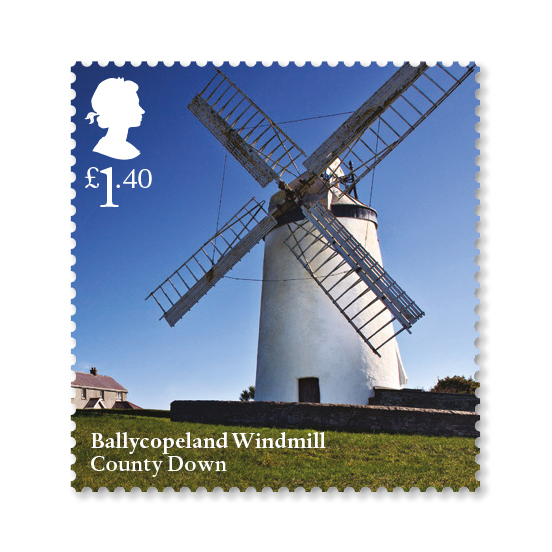
William Morris was a founder of the Society for the Protection of Ancient Buildings (SPAB). His 1877 manifesto called for the protection of ancient buildings so that they could be handed down "...instructive and venerable to those that come after us."
Having visited quite a few working mills during the course of our research for these stamps, it became clear that a renovated and working mill reaffirmed the value of Morris' ideas; for these are buildings in which we can stand and marvel at the ingenuity of our predecessors. They turned entire buildings into the prevailing wind or diverted watercourses — endeavours that harnessed rotational power for a multitude of tasks. This technology is not only 'instructive and venerable' as Morris described it 140 years ago, it is also becoming more prescient as we struggle to resolve the challenges of climate change.
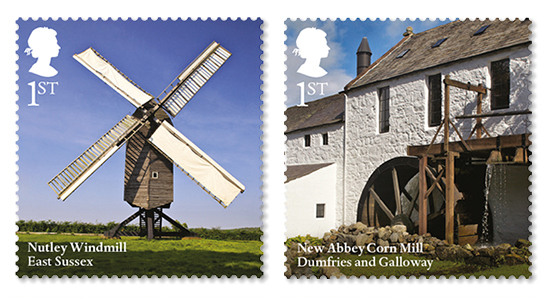
Nutley Windmill in East Sussex is an open-trestle post mill, built around a vertical post supported by sloping legs. Dendrochronology has established that the main-post (around which the windmill can turn full circle) came from a tree felled sometime between 1533-65. Nutley Windmill stopped working in 1908 and fell into neglect until it was restored by volunteers in the 1970s. There are only five open-trestle post mills surviving in England and Nutley is the only one still working.
A watermill has probably stood on the site of New Abbey Watermill in Dumfries and Galloway since the Middle Ages. The current one dates from the 18th century and was in commercial use until the Second World War. In the summer months visitors can see the channel that delivers water from above and falling just short of a vertical centre point, it forces the wooden buckets on the waterwheel to pitch back. This turn drives three pairs of grinding stones that separates husks from grain and then grinds the grain to produce groats.
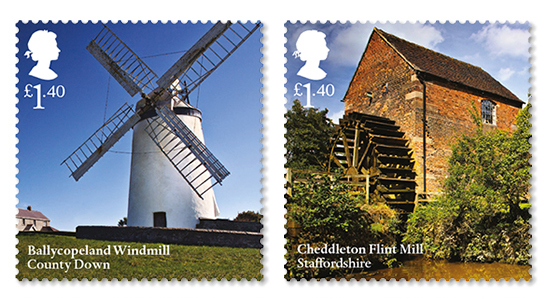
Ballycopeland Windmill sits on the skyline of County Down, Northern Ireland. It is a tower mill; a stone tower with a rotating cap powered by a fantail that automatically turns the sails into the wind. The windmill fell into disrepair after the First World War and then restored between 1950 and 1978. It is the last of more than a hundred windmills that used to cover the county. Atelier 'discovered' the windmill when one of the partners spent a summer holiday on the Ards Peninsula. Our interest in the area led to supporting another nearby restoration project. See Ards Work
Cheddleton Watermill in Staffordshire was probably built by the engineer James Brindley around 1760. It has red brick walls, tiled roof and a cast iron and timber undershot wheel 6.7m in diameter. The mill ground flint which was then transported by canal and used to harden the products made in the potteries of Stoke-on-Trent. The mill stopped working in 1963 and was restored in the 1970s. Today, it is the only water-powered flint mill still in operation.
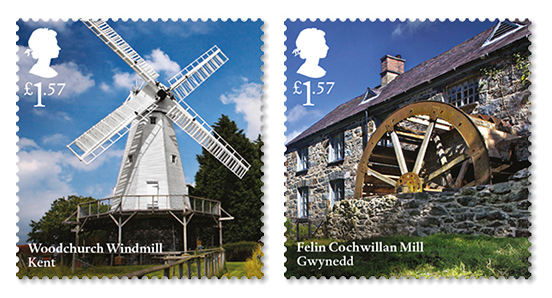
Woodchurch Windmill in Kent is a smock mill. It has a wide brick-built base with a fixed octagonal wooden tower and a traditional wagon-shaped cap that rotates so that the sails can be kept facing into the wind. It was built in 1820 and continued working for 106 years before it fell into disrepair. The smock tower has since been completely rebuilt and the windmill is now in working order. The four-storied interior houses three sets of millstones; two made from French burr and one of Derbyshire Peak.
Restoration of Felin Cochwillan Watermil in Gwynedd, Wales began in 1999 and still continues. It was originally built to clean and thicken cloth. The process is known as 'fulling' and it entailed the scouring and hammering of the raw cloth. In the late 18th century the watermill was converted to grinding corn and then later, animal feed for the local estate. The mill is powered by a high breast, under-shot waterwheel with 36 wooden buckets made from welsh elm.
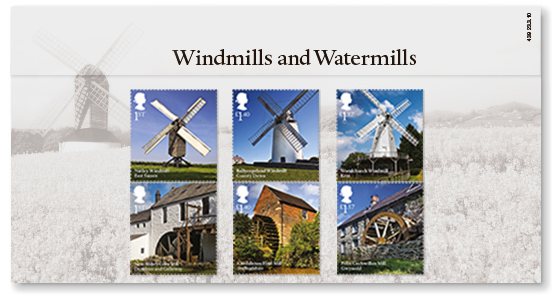
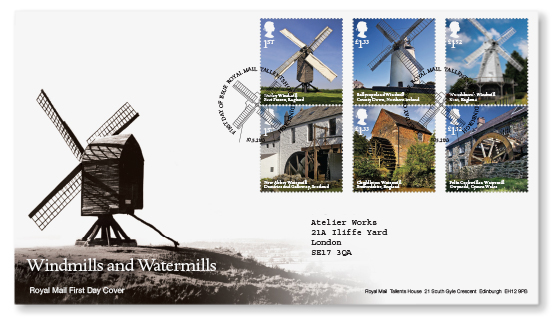
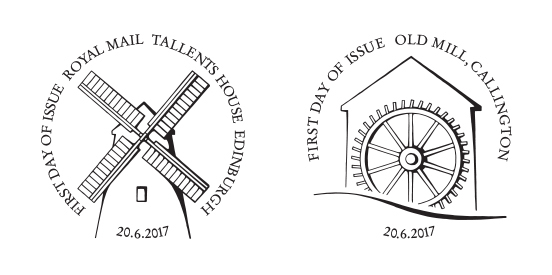
These stamps could be seen as merely beautiful images from the British countryside. However, if the issue prompts a visit to a working windmill or watermill during National Mills Weekend, then a small piece of gummed and perforated piece of paper may have become 'instructive and venerable'.
Stamp format/size: portrait 35mm x 37mm. Print process: lithography. Perforation: 14.5 × 14. Phosphor: bars. Gum: PVA. Number of stamps: 6
Related blog: Windmills & Waterwheels